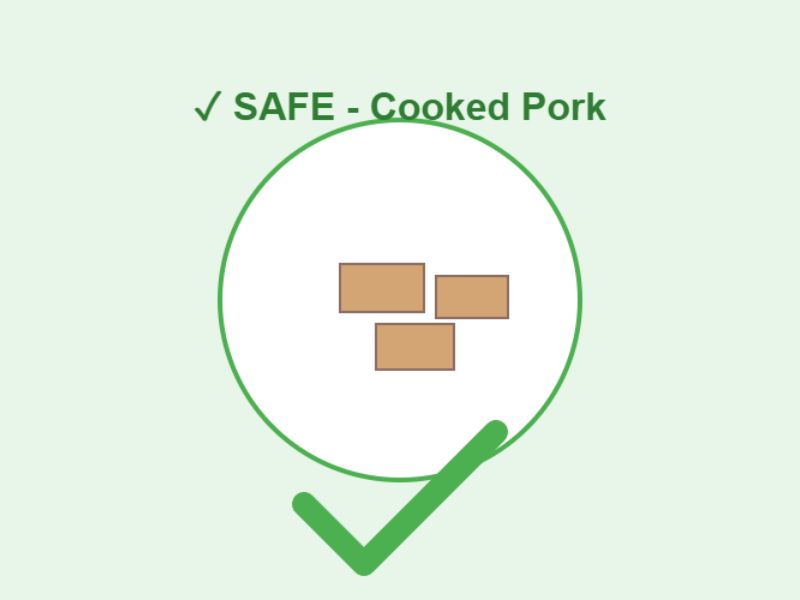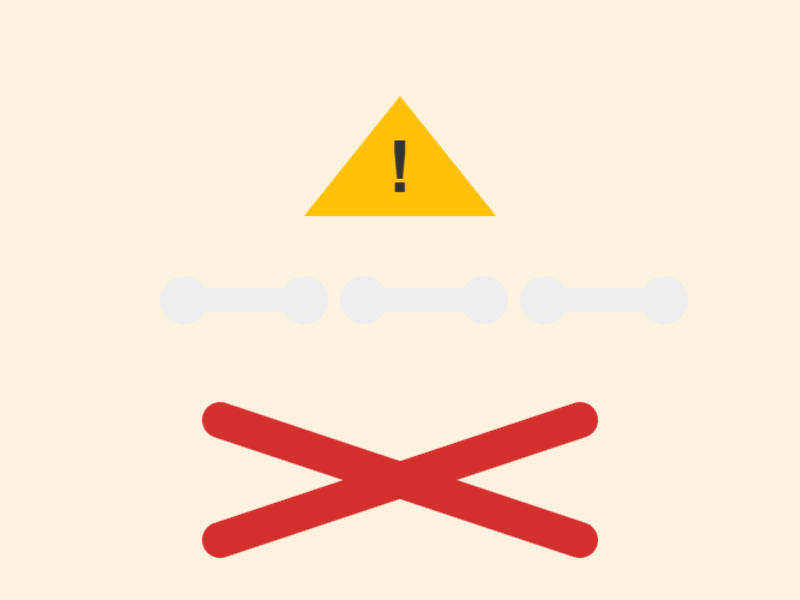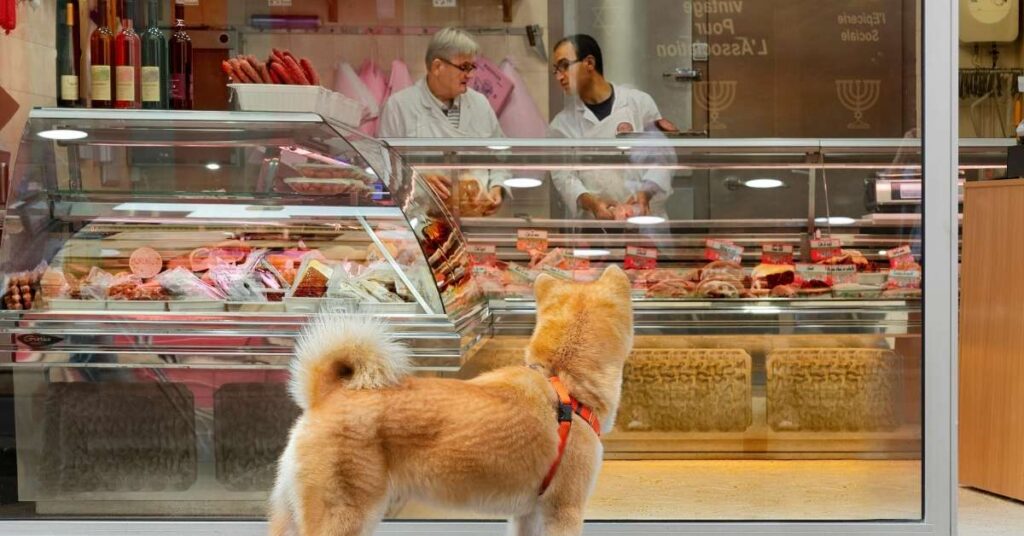Can dogs eat pork? This is one of the most common questions I hear from worried pet owners. Last Sunday, my neighbor called me in a panic after her golden retriever snatched a pork chop off the dinner table. The short answer is yes—dogs can safely eat pork when it’s prepared correctly. Plain, cooked pork without bones or seasonings is generally safe for most dogs. However, raw pork, pork bones, and processed pork products can be dangerous.
In this guide, I’ll walk you through everything you need to know about feeding pork to your dog, including safe types, dangerous ones, and proper preparation methods.
Can Dogs Have Pork? Understanding the Basics
Many dog owners believe pork is completely off-limits for pets. This myth probably started because of concerns about parasites and fat content. The truth is more nuanced.
Dogs can digest pork quite well when it’s properly cooked. In fact, pork provides high-quality protein and essential nutrients. The key word here is “properly cooked.” Let me explain what makes pork safe or dangerous for your furry friend.
Nutritional Benefits of Pork for Dogs
Pork offers several nutritional advantages for dogs:
- High-quality protein that supports muscle development
- Vitamin B12 for healthy nerve function
- Thiamine, which helps with energy metabolism
- Zinc and selenium for immune system support
- Phosphorus for strong bones and teeth
Compared to chicken or beef, pork has a similar protein profile. However, it tends to be higher in fat, which means you should serve it in moderation.
When Pork Becomes Dangerous for Dogs
Despite its benefits, pork can pose serious risks if you don’t follow safety guidelines. Understanding these dangers helps you make better decisions about feeding pork to dogs.
The main concerns include:
- Raw pork carries parasites and bacteria
- Pork bones splinter easily and cause injuries
- Processed pork contains harmful additives
- High fat content can trigger pancreatitis
- Seasonings may include toxic ingredients
Let’s dive deeper into each concern.
Can Dogs Eat Cooked Pork Safely?

Plain, thoroughly cooked pork is the safest option for dogs
Cooking pork thoroughly is absolutely essential. When you cook pork properly, you eliminate parasites and bacteria that could make your dog sick.
Why Cooking Matters
Raw pork can harbor Trichinella spiralis, a parasite that causes trichinosis. This illness leads to muscle pain, fever, and digestive problems. Additionally, raw pork may contain Salmonella and E. coli bacteria.
Cooking pork to an internal temperature of 145°F (63°C) kills these harmful organisms. Your dog can then safely enjoy the nutritional benefits without the risks.
Best Cooking Methods for Dogs
When preparing pork for your dog, simplicity is key:
Boiling works exceptionally well because it removes excess fat. Simply place the pork in water and boil until fully cooked. This method is gentle on your dog’s stomach.
Baking is another excellent option. Place the pork in the oven at 350°F until it reaches the proper temperature. Skip the oils and seasonings entirely.
Grilling can work, but avoid charred pieces. Burnt meat contains compounds that aren’t healthy for dogs.
Remember, never add salt, pepper, garlic, onions, or any other seasonings. Dogs don’t need flavor enhancers, and many common spices are toxic to them.
Which Pork Cuts Are Best?
Lean cuts work best for dogs. Consider these options:
Pork tenderloin is the leanest choice. It’s easy to digest and provides excellent protein without excessive fat.
Boneless pork chops (with fat trimmed) make good occasional treats. Just ensure you remove every bit of bone.
Ground pork should be lean (90% lean or higher). Cook it thoroughly and drain any excess fat before serving.
Avoid fatty cuts like pork belly. Too much fat can upset your dog’s stomach or trigger pancreatitis.
Can Dogs Eat Raw Pork? Never!
Raw pork poses serious health risks to dogs and should never be fed
I need to be crystal clear: never feed your dog raw pork. While some people advocate for raw diets, pork is exceptionally risky compared to other meats.

The Parasite Problem
Trichinella spiralis lives in raw pork muscle tissue. When your dog eats infected meat, these parasites can cause severe illness. Symptoms include:
- Vomiting and diarrhea
- Muscle pain and stiffness
- Fever and lethargy
- Loss of appetite
- Swelling around the eyes
These symptoms can appear within days or take weeks to develop. The infection can become life-threatening without treatment.
What If My Dog Ate Raw Pork?
Accidents happen. If your dog grabbed raw pork, watch for warning signs:
- Vomiting or diarrhea within 24 hours
- Loss of appetite
- Unusual lethargy
- Fever or shivering
Contact your veterinarian immediately if you notice any symptoms. Early treatment prevents complications.
Can Dogs Eat Pork Bones? Absolutely Not!

Pork bones splinter into sharp, dangerous fragments
Never give your dog pork bones. Many dog owners assume bones are natural treats, but pork bones are uniquely dangerous.
Why Pork Bones Are Risky
When cooked, pork bones become brittle. They splinter into sharp fragments that can:
- Pierce your dog’s mouth or throat
- Cause choking
- Damage the esophagus
- Puncture the stomach or intestines
- Create blockages requiring emergency surgery
Even raw pork bones pose risks. They’re softer than cooked bones but can still splinter. Additionally, they carry the same parasite risks as raw pork meat.
Emergency: My Dog Ate a Pork Bone
If your dog ate a pork bone, stay calm but act quickly:
- Do not induce vomiting (bone fragments can cause more damage)
- Call your veterinarian immediately
- Watch for signs of distress: difficulty breathing, excessive drooling, or pawing at the mouth
- Monitor bowel movements for blood
Don’t wait to see if your dog is okay. Bone injuries can worsen rapidly.
Safe Alternatives to Pork Bones
Plenty of safe chewing options exist:
- Vet-approved dental chews designed for your dog’s size
- Rubber chew toys filled with treats
- Bully sticks or other digestible chews
- Kong toys stuffed with dog-safe foods
Different Types of Pork: What’s Safe?

Different pork products require different safety considerations
Not all pork products are created equal. Let me break down the common types and their safety levels.
Plain Pork Meat (Safe)
Plain cooked pork meat is generally safe. Stick to lean cuts like tenderloin or trimmed chops. Cook thoroughly, remove all bones, and serve in small portions.
Ground pork works well mixed into your dog’s regular food. Just ensure it’s cooked completely with no pink remaining. Drain excess fat before serving.
Pulled Pork (Sometimes Safe)
Homemade pulled pork can be safe if prepared correctly. However, most pulled pork recipes include seasonings, sugars, and sauces that make it unsuitable for dogs.
If you want to share pulled pork, set aside a plain portion before adding any flavoring. Shred it finely and mix it with your dog’s regular food. Skip the BBQ sauce entirely.
Processed Pork Products (Dangerous)
Processed pork products contain ingredients that harm dogs:
Bacon smells irresistible but is loaded with salt and fat. Regular bacon consumption can lead to obesity, pancreatitis, and heart problems.
Pork sausage typically contains garlic, onions, and other toxic seasonings. Even “plain” sausage has too much salt and fat.
Ham contains excessive salt that can cause sodium ion poisoning. Symptoms include vomiting, diarrhea, seizures, and even death in severe cases.
Pork rinds are extremely dangerous. They’re high in fat and salt, and they pose a choking hazard.
Pork Liver (Safe in Moderation)
Organ meats like pork liver offer nutritional benefits. They’re rich in vitamins and minerals. However, liver is very rich and should only be given in small amounts.
Too much liver can cause vitamin A toxicity. Limit liver treats to once a week, and keep portions small.
Can Puppies Eat Pork?
Puppies can eat pork, but timing and portions matter
Puppies have more sensitive digestive systems than adult dogs. Extra caution is necessary when introducing new foods.
When Can Puppies Start?
Wait until your puppy is at least six months old before introducing pork. Their digestive systems need time to mature.
Start with tiny amounts—just a small bite mixed into their regular puppy food. Watch for any signs of digestive upset like diarrhea or vomiting.
Best Options for Puppies
Stick to the easiest-to-digest options:
- Boiled ground pork (lean, well-cooked, and crumbled)
- Finely chopped pork tenderloin
- Small pieces mixed with rice or their regular food
Never replace regular puppy food with pork. Puppies need balanced nutrition designed for growth.
How to Safely Feed Pork to Your Dog
Proper portion sizes keep pork safe and healthy
Following proper feeding guidelines ensures pork remains a safe treat.
Portion Sizes by Dog Size
The right amount depends on your dog’s size:
- Small dogs (under 20 lbs): 1-2 tablespoons
- Medium dogs (20-50 lbs): 2-4 tablespoons
- Large dogs (50-80 lbs): 4-6 tablespoons
- Giant breeds (over 80 lbs): 6-8 tablespoons
These portions should replace part of their regular meal, not add extra calories.

Frequency Recommendations
Pork should be an occasional treat, not a regular meal. Once or twice per week is plenty. This frequency provides variety without overloading your dog with fat.
Step-by-Step Preparation
Follow these steps for safe pork preparation:
- Choose a lean cut of pork
- Remove all visible fat and any bones
- Cook thoroughly to 145°F internal temperature
- Let it cool completely
- Cut into bite-sized pieces for your dog’s size
- Serve plain or mixed with regular food
- Store leftovers in the refrigerator for up to 3 days
Never season the pork. What tastes good to you can make your dog sick.
What Happens After Dogs Eat Pork?
Most dogs handle properly prepared pork without issues. However, knowing what to watch for helps you respond quickly if problems arise.
Normal Reactions
After eating pork, your dog might:
- Drink more water than usual
- Show satisfied behavior
- Have normal bowel movements
- Display good energy levels
These are positive signs that your dog digested the pork well.
Warning Signs of Problems
Watch for these concerning symptoms:
- Vomiting within a few hours
- Diarrhea or loose stools
- Excessive gas or bloating
- Lethargy or weakness
- Loss of appetite for the next meal
- Abdominal pain (whining, restlessness, or hunched position)
If symptoms are mild and disappear within 24 hours, your dog probably had a minor digestive upset. However, persistent or severe symptoms require veterinary attention.
Pancreatitis Warning
Too much fat can trigger pancreatitis—a painful and potentially life-threatening condition. Symptoms include:
- Severe vomiting
- Abdominal pain (hunched posture)
- Loss of appetite
- Fever
- Lethargy
If you notice these signs after feeding pork to dogs, contact your vet immediately.
Expert Tips for Feeding Pork
After years of working with dog nutrition, here are my top tips:
Start Small and Watch
Introduce any new food gradually. Give a tiny piece and wait 24 hours. If your dog handles it well, you can slowly increase the amount.
Choose Quality Meat
Select fresh, high-quality pork from trusted sources. Organic, hormone-free pork is ideal when available. It contains fewer additives that might cause reactions.
Keep It Simple
The simpler, the better. Plain cooked pork beats fancy preparations every time. Your dog doesn’t need seasonings—they just want the meat.
Mix with Regular Food
Rather than serving pork alone, mix it with your dog’s regular food. This approach provides balanced nutrition and reduces the risk of digestive upset.
Store Properly
Cooked pork stays fresh in the refrigerator for 3-4 days. Store it in an airtight container. You can also freeze cooked pork for up to 3 months.
Pair with Dog-Safe Foods
Pork pairs well with plain cooked rice, sweet potatoes, green beans, carrots, and regular dog kibble. These combinations create balanced, nutritious meals.
Final Thoughts
Can dogs eat pork? Absolutely, when you follow the safety guidelines outlined here. Cook it thoroughly, remove all bones, skip the seasonings, and serve appropriate portions. Your dog can safely enjoy this protein-rich treat.
Remember that pork should complement a balanced diet, not replace it. Most commercial dog foods provide complete nutrition. Pork works best as an occasional treat or supplement.
The key takeaways:
- Cooked, plain pork is safe for dogs
- Raw pork is dangerous due to parasites
- Pork bones are extremely risky
- Processed pork should be avoided
- Proper portions matter
- Quality ingredients are important
By following these guidelines, you can safely share pork with your furry friend. Start with small amounts, watch for reactions, and enjoy seeing your dog’s happy face when they taste this special treat.
When in doubt, consult your veterinarian. They know your dog’s specific health needs and can provide personalized guidance. Every dog is unique, and what works for one might not suit another.
Now you have the knowledge to make informed decisions about feeding pork to your dog. Your four-legged companion will appreciate the variety, and you’ll have peace of mind knowing you’re keeping them safe and healthy.

